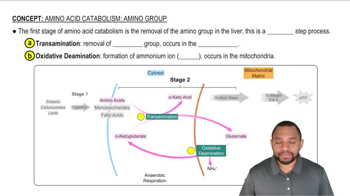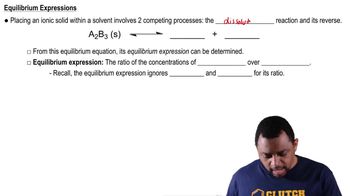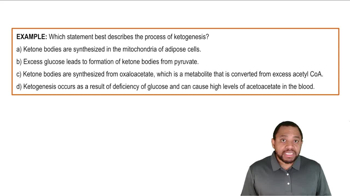Name the metabolic substrate(s) that can be produced from the carbon atoms of each of the following amino acids:
c. cysteine
 Verified step by step guidance
Verified step by step guidance Verified video answer for a similar problem:
Verified video answer for a similar problem:



 2:41m
2:41mMaster Amino Acid Catabolism: Carbon Atoms Concept 1 with a bite sized video explanation from Jules
Start learning